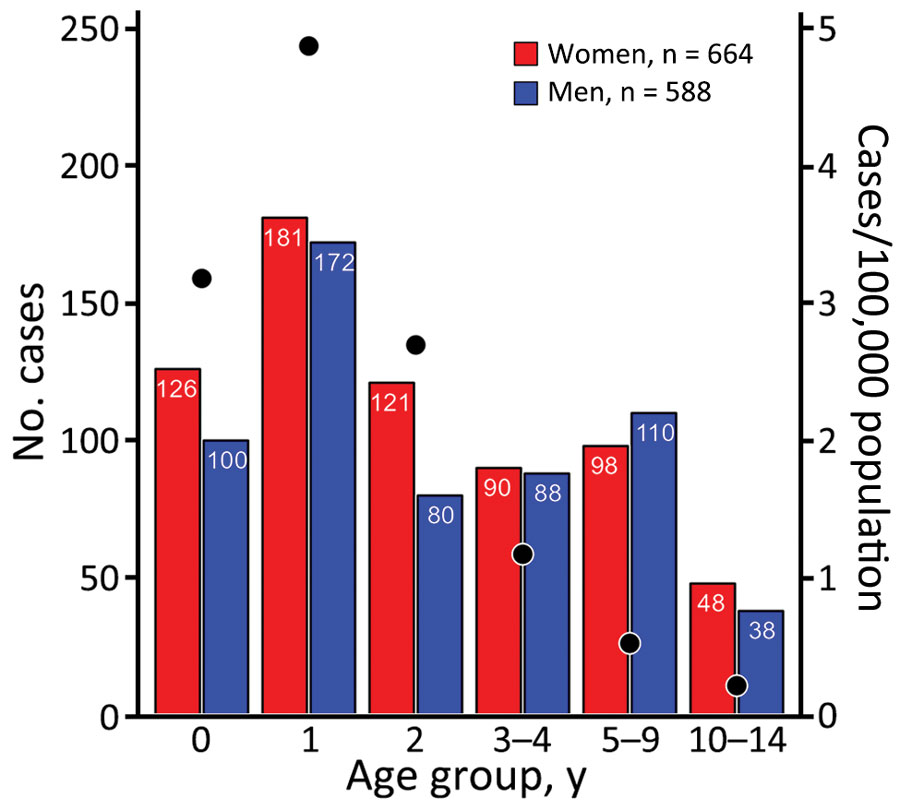Volume 29, Number 10—October 2023
Research
Sporadic Shiga Toxin–Producing Escherichia coli–Associated Pediatric Hemolytic Uremic Syndrome, France, 2012–2021
Figure 3

Figure 3. Number of reported sporadic Shiga toxin–producing Escherichia coli–associated pediatric hemolytic uremic syndrome cases, by age group and sex, and incidence rate, by age group (black dots), France, 2012–2021. Data were missing on sex for 3 cases (1 case each in patients <1 year, 3 years, and 4 years of age).
Page created: August 18, 2023
Page updated: September 20, 2023
Page reviewed: September 20, 2023
The conclusions, findings, and opinions expressed by authors contributing to this journal do not necessarily reflect the official position of the U.S. Department of Health and Human Services, the Public Health Service, the Centers for Disease Control and Prevention, or the authors' affiliated institutions. Use of trade names is for identification only and does not imply endorsement by any of the groups named above.